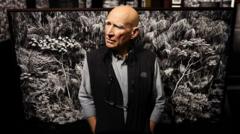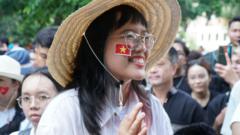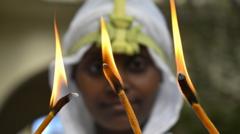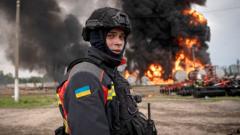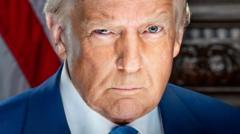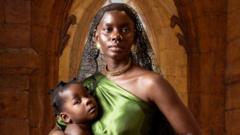Photographers like Dickey Chapelle and Tim Page immortalized the Vietnam War's realities, shaping public opinion and altering the course of American history. Their haunting visuals continue to resonate, forever changing the way we perceive conflict and its consequences.**
The Lasting Impact of Vietnam War Photography**

The Lasting Impact of Vietnam War Photography**
As the 50th anniversary of the Vietnam War's conclusion approaches, we examine how powerful imagery from this conflict transformed American perspectives on war and humanity.**
Fifty years have passed since the Vietnam War officially ended on April 30, 1975, and yet its haunting images remain as relevant as ever. Often referred to as the first “living room war,” the Vietnam conflict was uniquely characterized by its presence in homes across America through television broadcasts and powerful photography. It was a time when photojournalists courageously documented the raw and often brutal truths of war, capturing the intimate and intense emotional landscapes of soldiers and civilians alike.
The photography emerging from this tumultuous period not only reflected the devastation of war but also provoked a deep public contemplation about morality, sacrifice, and the American identity. The photos transmitted the tension and sorrow of the battlefields, giving voice to the pain of the soldiers and the devastating impact on Vietnam itself. One might consider the words of author Tim O’Brien in his poignant work “The Things They Carried,” where he reflects on survival without happiness: “I survived… but it’s not a happy ending.”
In the media spotlight were remarkable photojournalists such as Dickey Chapelle, the first female journalist to lose her life in Vietnam, whose Midwestern roots and fervent anti-communist sentiment painted a vivid picture of the war's complexities. Tim Page, known for his irreverent style, and Henri Huet, a French-Vietnamese photographer renowned for his kindness, also contributed essential perspectives, showcasing the myriad emotions tied to war—from humor to heartache.
The collective efforts of these brave individuals changed the narrative surrounding Vietnam, pushing the American public to engage with the stark realities of warfare. As we reflect on five decades since the war's end, the legacy of these photographs persists, reminding us of the intricate relationship between media, memory, and the contentious discourse of war in America.


